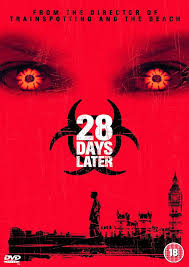Exploring the Impact of 28 Days Later on Zombie Cinema

Introduction
Released in 2002, 28 Days Later directed by Danny Boyle redefined the zombie genre and left a lasting impact on horror films. With its unique narrative, stunning cinematography, and commentaries on society, the film not only reinvigorated interest in the undead but also set a new standard for storytelling in horror. Its relevance persists today, influencing both filmmakers and culture as the genre continues to evolve.
Overview of the Film
28 Days Later follows the story of a post-apocalyptic world where a viral outbreak turns humans into rage-fueled zombies. The film begins with an animal rights activist inadvertently releasing a deadly virus from a research lab. The aftermath leads to societal collapse and the story unfolds from the perspective of Jim, a man who wakes up from a coma 28 days later to find London deserted and overrun by infected humans.
Innovative Cinematic Techniques
One of the most notable aspects of 28 Days Later is its use of digital video, which allowed for a distinctive visual style that felt raw and immediate. The desolate streets of London captured in wide shots became iconic, emphasizing the themes of isolation and despair. Additionally, the film’s score, composed by John Murphy, further heightened the emotional stakes, leaving a lasting impression on audiences.
Societal Reflections
Beyond being a mere horror flick, 28 Days Later also serves as an allegory for societal anxieties. It sheds light on subjects such as government control, the consequences of human actions on nature, and the fragility of civilization. By portraying a world devastated by a virus reminiscent of real-life pandemics, the film resonates deeply in the context of global health crises.
Legacy and Influence
The movie not only ignited interest in the zombie genre but also paved the way for other influential works in horror. Films like World War Z and the series The Walking Dead draw inspiration from the themes and stylistic approaches of 28 Days Later. The film also laid the groundwork for a sequel, 28 Weeks Later, and continues to be referenced in discussions about horror cinema.
Conclusion
In conclusion, 28 Days Later stands as a landmark film in the horror genre, redefining audience expectations and influencing countless filmmakers. Its unique blend of terror, social commentary, and innovative cinematic techniques ensures its status as a cultural touchstone that will be analyzed and appreciated for years to come. With the ongoing popularity of the zombie genre, its significance remains relevant, reminding audiences of the delicate balance between civilization and chaos.


